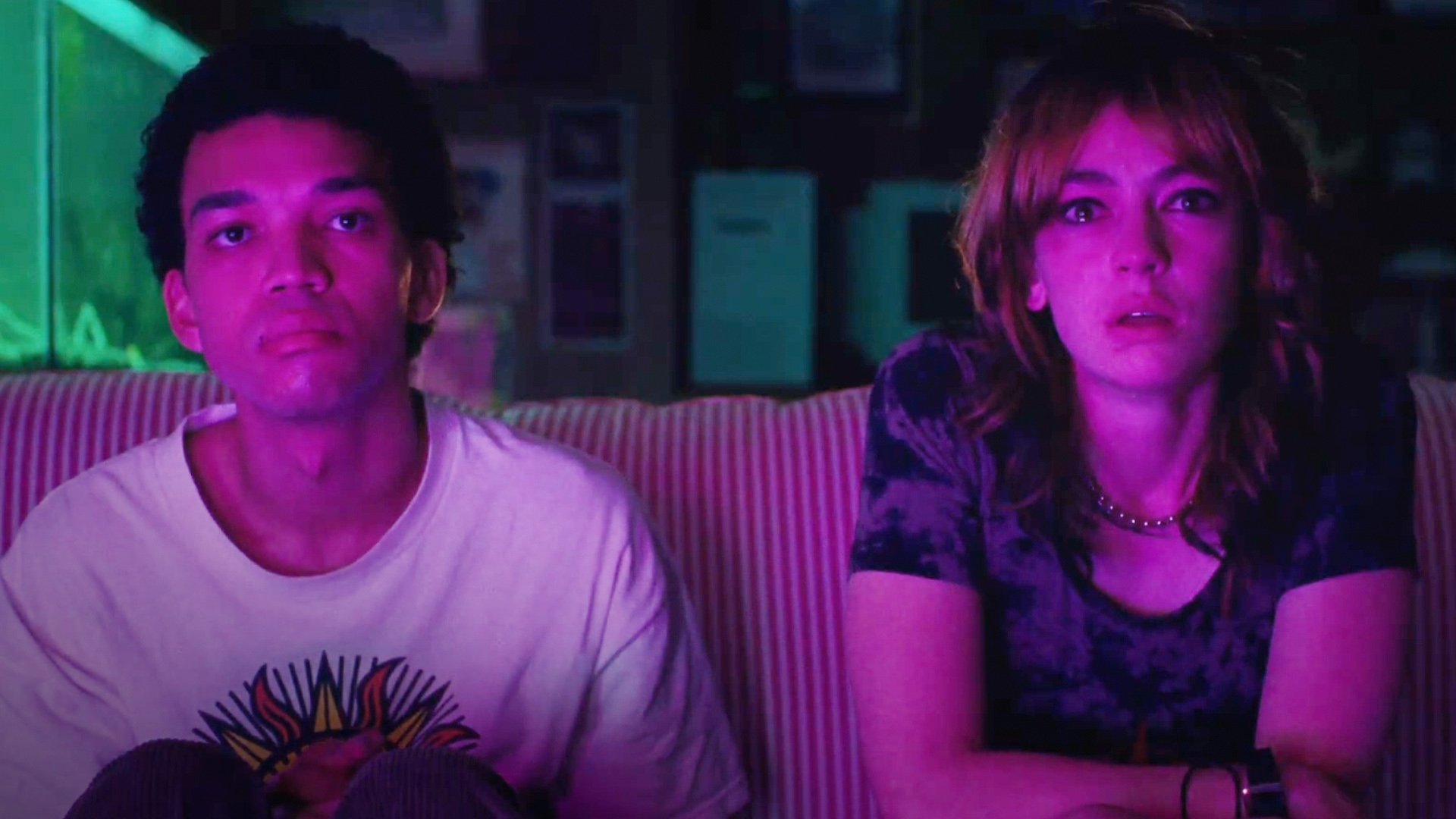‘I Saw The TV Glow’ - Review
In the drained neon halls of a children’s arcade, a child, crowned birthday boy, is entombed in a see-through plastic box. Money flies around him, his friends and family cheer him on, and above his head the electronic placard reads “YOU ARE DYING”. Owen (Justice Smith), our narrator, watches from the sides as no one else notices the rumbling dread underscoring the scene. This moment is a microcosm for I Saw the TV Glow: a hermetic world deeply concerned with its appearance to those outside it; the intrusion of adult themes into children’s pastimes; and a rather on-the-nose literalization of the pointlessness anhedonia and dysphoria will drive you to find in life. It’s also, centrally, a movie less “about” transness than “opening up” transness, spilling out the lived-in guts of the moments of self-realization and the accompanying flood of repressive shame that can leave a person buried.
“I started rewatching my favorite TV show,” Owen opens the movie with. Now an adult, Owen returns to The Pink Opaque, a monster-of-the-week girl-power serial, and with it rediscovers a host of half-forgotten memories centering around his seismic friendship with Maddy (Brigette Lundy-Paine). The two share the important things in common: a love for The Pink Opaque, a stilted manner of speaking halfway between creepypasta voice-over and didactic self-disclosure, and a total estrangement from their other peers and family. They crisscross together in a suburb where the chalk drawings sizzle with TV static, the images of the screen literally leaking into the real world, sharing the secret of a show where they both find a momentary respite before growing into adulthood. This friendship, wholly unbeknownst to either of the pair’s parents, mirrors so many cross-gender relationships that blossom in shared, nascent queerness; I don’t know who I am or what you mean to me, but I know that parts of me come out around you that I can’t even name. Mediated by The Pink Opaque, these powerful emotions are exorcized and resolved alongside its finale.
Or so Owen thinks. I Saw the TV Glow takes its point of departure from the inevitable “what if that TV show was actually so much more” and shoots electricity like a downed cable line towards its deeply disconcerting closing suggestions. From here is where the movie’s central allegory as a trans text takes center stage. Although never calling it gender dysphoria by name, director Jane Schoenbrun directs their actors, especially as adults, with such intense, nearly schizoaffective entrapment that it becomes physically painful to imagine the people trapped inside these automatons the world has fashioned them into. It’s an affect that is sure to be familiar to anyone who has tried to embrace normalcy, not out of social pressure, but out of a desire to appear as unchained by yourself as everyone else seems.
Of particular note is Brigette Lundy-Paine. Schoenbrun manages to shoot this actor in such a way as to draw out an aspirational feminine beauty that is distinctly queer and trans, from Maddy’s shaggy wolf cuts to their baggy eyes. She’s the type of character a young trans woman would fixate on: rejected by the world, remarkably self-possessed, and dreaming constantly of a brighter reality that she will one day find a portal to. With this iconoclastic look, Lundy-Paine channels the enlightenment in between psychosis and total detachment from the world, calling to mind Barry Keoghan in his dubiously God-like role in The Killing of a Sacred Deer. It’s a film-making performance which is sure to have casting directors clamoring to give Lundy-Paine indie cinema’s next show-stopping monologue.
I Saw the TV Glow is at its best when making beautiful and/or horrific how the disaffected lives of losers are channeled through the media they consume. Phlox purple glows make holy moments that would never be depicted in most films, let alone seen as momentous: rewatching the finale of a beloved TV show or ordering your typical fast-food dinner after another rotten shift. It’s so accomplished at depicting this communion that even I, as a trans woman, wonder if something is not sacrificed in putting it so explicitly towards the allegorization of gender exploration. Through moments where Owen dons a secret dress, just like the main character of The Pink Opaque, I connected with a past version of myself and felt her fear, her elation, and her confusion. Through the scenes where the show seems to bleed through into the world, like discovering an episode guide seemingly placed for you to find, I connected with my past, current, and future selves, every me that will ever struggle towards insight through the art I encounter. The now oft-repeated reaction that Schoenbrun’s sophomore future is for those still at the outset of their trans journey may hold too true; it pens in that experience of gender with aplomb, but looking at the materials left over, it feels like it could’ve fenced in an even wider view of Self. Although at times overly keen and concrete in its own symbology, I Saw the TV Glow accomplishes what queer audiences hoping for another trans-salvo from Schoenbrun want: a reflection of the intensity of the unspeakable emotions called out of us by art, and the pain and interminability of hesitancy in making ourselves into ourselves.



